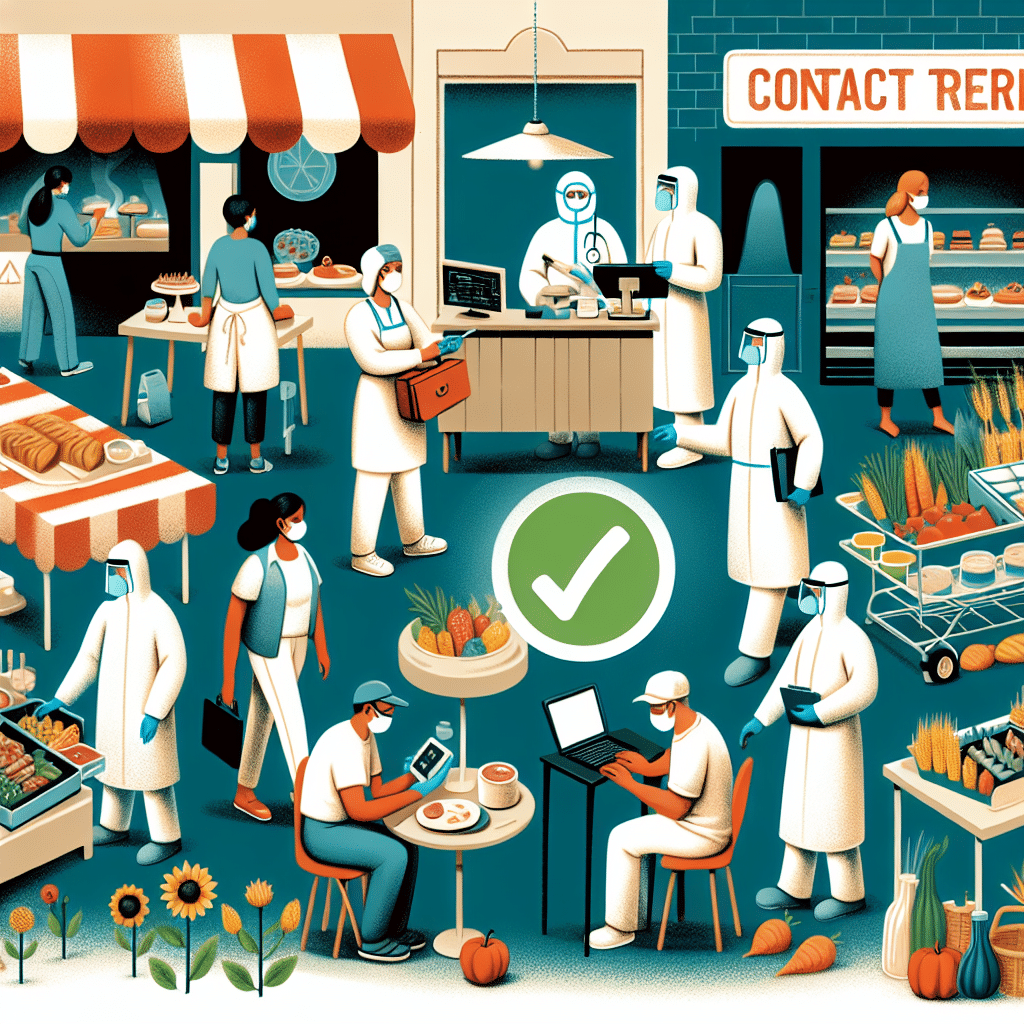Establishing Contact Tracing to Help the Food Sector Reopen for Business
-
Table of Contents
- Establishing Contact Tracing to Boost Food Sector Reopening
- The Importance of Contact Tracing in the Food Sector
- Steps to Establish Contact Tracing in the Food Sector
- Developing a Contact Tracing Plan
- Implementing Digital Solutions
- Collaborating with Health Authorities
- Ensuring Privacy and Data Security
- Challenges and Considerations
- Case Studies and Success Stories
- Conclusion: Contact Tracing as a Pathway to Reopening
- ETprotein: Supporting the Food Sector with Quality Protein Products
Establishing Contact Tracing to Boost Food Sector Reopening

The food sector has been one of the hardest hit by the global pandemic, with restaurants, cafes, and bars facing unprecedented challenges. As the world begins to emerge from the shadow of COVID-19, the reopening of the food sector is a priority for economic recovery. However, this must be done safely to prevent further outbreaks and ensure the health of both employees and customers. One of the key strategies in achieving this balance is the implementation of effective contact tracing. This article explores how contact tracing can help the food sector reopen for business and the steps involved in establishing a robust system.
The Importance of Contact Tracing in the Food Sector
Contact tracing is a critical tool in managing the spread of infectious diseases. By quickly identifying and isolating individuals who have come into contact with an infected person, health authorities can prevent further transmission. In the context of the food sector, contact tracing can provide several benefits:
- Ensuring the safety of staff and customers by identifying potential exposure events
- Building consumer confidence by demonstrating a commitment to health and safety
- Allowing for targeted closures or quarantines, rather than industry-wide shutdowns
- Providing valuable data to guide public health decisions and policy
Statistics from countries that have successfully implemented contact tracing show a significant reduction in the spread of COVID-19. For instance, South Korea’s rigorous contact tracing program has been credited with keeping the virus under control without resorting to extensive lockdowns.
Steps to Establish Contact Tracing in the Food Sector
Developing a Contact Tracing Plan
Before reopening, food businesses should develop a comprehensive contact tracing plan. This plan should outline procedures for recording customer and staff interactions, reporting cases, and responding to potential exposures. It should also include training for staff on the importance of contact tracing and how to effectively communicate with customers about the process.
Implementing Digital Solutions
Technology can play a significant role in streamlining contact tracing efforts. Digital solutions such as QR code check-ins, mobile apps, and online reservation systems can automate data collection and provide accurate records of customer visits. These systems can also facilitate rapid notification to individuals who may have been exposed to the virus.
Collaborating with Health Authorities
Effective contact tracing requires close collaboration with local health authorities. Food businesses should establish clear lines of communication and understand the protocols for reporting cases and assisting with contact tracing investigations.
Ensuring Privacy and Data Security
Handling personal data comes with a responsibility to protect privacy. Food businesses must ensure that contact tracing data is collected and stored securely and is only used for public health purposes. Clear policies should be communicated to customers to build trust and encourage participation in contact tracing efforts.
Challenges and Considerations
While contact tracing is a powerful tool, it is not without challenges. Concerns about privacy, the need for widespread participation, and the potential for false positives or negatives can complicate efforts. Additionally, the food sector must balance the urgency of reopening with the need to maintain strict health protocols, which may include capacity limits and enhanced sanitation measures.
Case Studies and Success Stories
Several jurisdictions have successfully implemented contact tracing in the food sector. For example, Singapore’s TraceTogether program and New Zealand’s COVID Tracer app have been instrumental in allowing these countries to reopen their economies while managing the risk of outbreaks. These success stories provide valuable lessons for other regions looking to follow suit.
Conclusion: Contact Tracing as a Pathway to Reopening
Contact tracing is a vital component of the strategy to reopen the food sector safely. By establishing a robust contact tracing system, businesses can protect their staff and customers, contribute to public health efforts, and take a significant step towards economic recovery. While challenges exist, the benefits of contact tracing in controlling the spread of COVID-19 and restoring consumer confidence are clear. With careful planning, technological support, and collaboration with health authorities, the food sector can navigate the path to reopening with confidence.
ETprotein: Supporting the Food Sector with Quality Protein Products
As the food sector reopens, there is an increased focus on health and wellness, which includes the demand for high-quality protein products. ETprotein is well-positioned to support the food industry with its range of organic bulk vegan proteins and L-(+)-Ergothioneine (EGT). Their products are ideal for businesses looking to enhance their offerings with non-GMO, allergen-free, and high-purity ingredients. Whether for nutraceuticals, sports nutrition, or general health and wellness, ETprotein’s products can help meet the evolving needs of consumers in the post-pandemic market.
About ETprotein:
ETprotein, a reputable protein and L-(+)-Ergothioneine (EGT) Chinese factory manufacturer and supplier, is renowned for producing, stocking, exporting, and delivering the highest quality organic bulk vegan proteins and L-(+)-Ergothioneine. They include Organic rice protein, clear rice protein, pea protein, clear pea protein, watermelon seed protein, pumpkin seed protein, sunflower seed protein, mung bean protein, peanut protein, and L-(+)-Ergothioneine EGT Pharmaceutical grade, L-(+)-Ergothioneine EGT food grade, L-(+)-Ergothioneine EGT cosmetic grade, L-(+)-Ergothioneine EGT reference grade and L-(+)-Ergothioneine EGT standard. Their offerings, characterized by a neutral taste, non-GMO, allergen-free attributes, with L-(+)-Ergothioneine purity over 98%, 99%, cater to a diverse range of industries. They serve nutraceutical, pharmaceutical, cosmeceutical, veterinary, as well as food and beverage finished product distributors, traders, and manufacturers across Europe, USA, Canada, Australia, Thailand, Japan, Korea, Brazil, and Chile, among others.
ETprotein specialization includes exporting and delivering tailor-made protein powder and finished nutritional supplements. Their extensive product range covers sectors like Food and Beverage, Sports Nutrition, Weight Management, Dietary Supplements, Health and Wellness Products, and Infant Formula, ensuring comprehensive solutions to meet all your protein needs.
As a trusted company by leading global food and beverage brands and Fortune 500 companies, ETprotein reinforces China’s reputation in the global arena. For more information or to sample their products, please contact them and email sales(at)ETprotein.com today.














